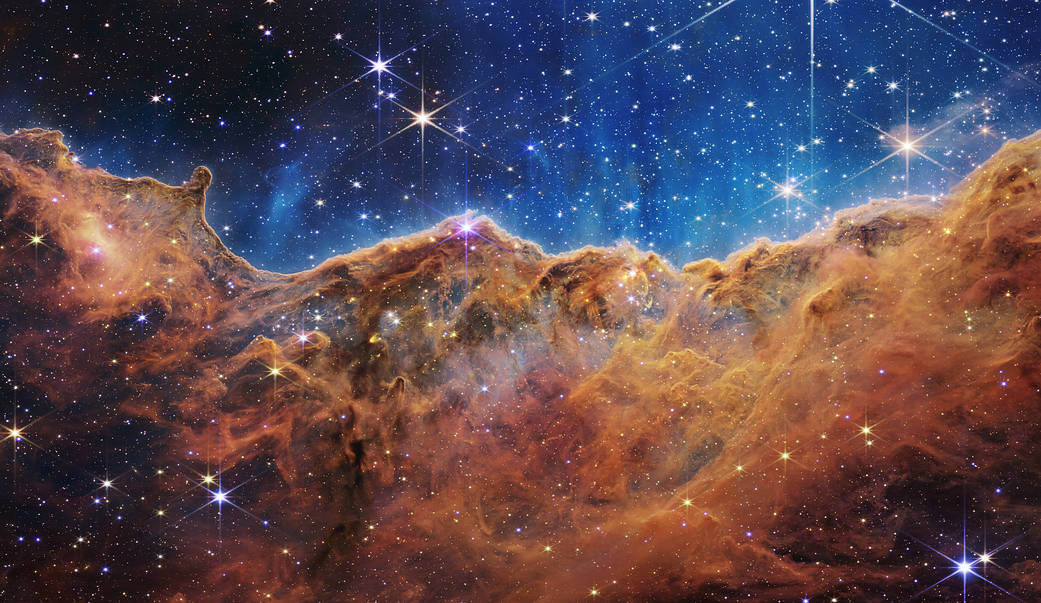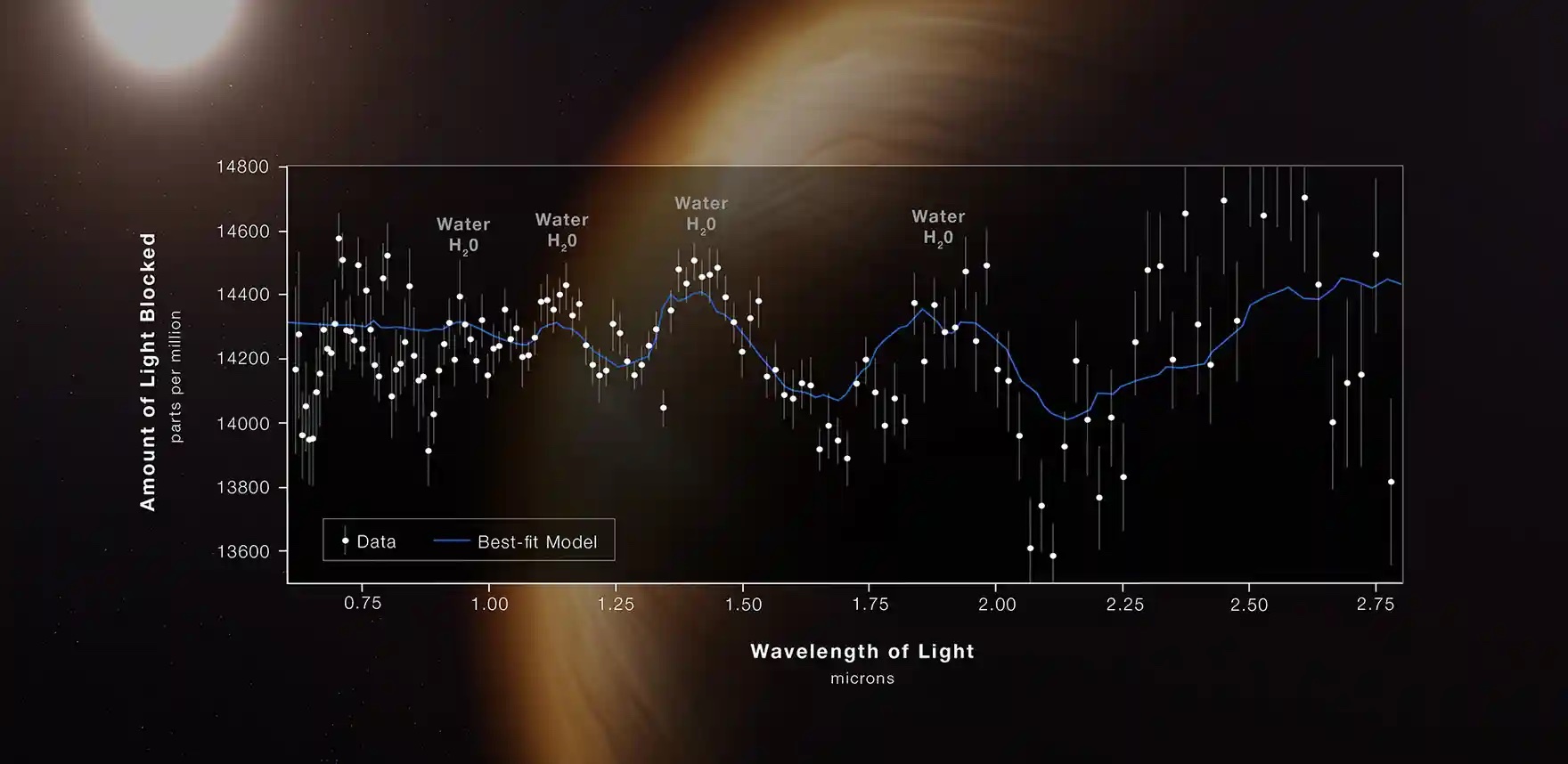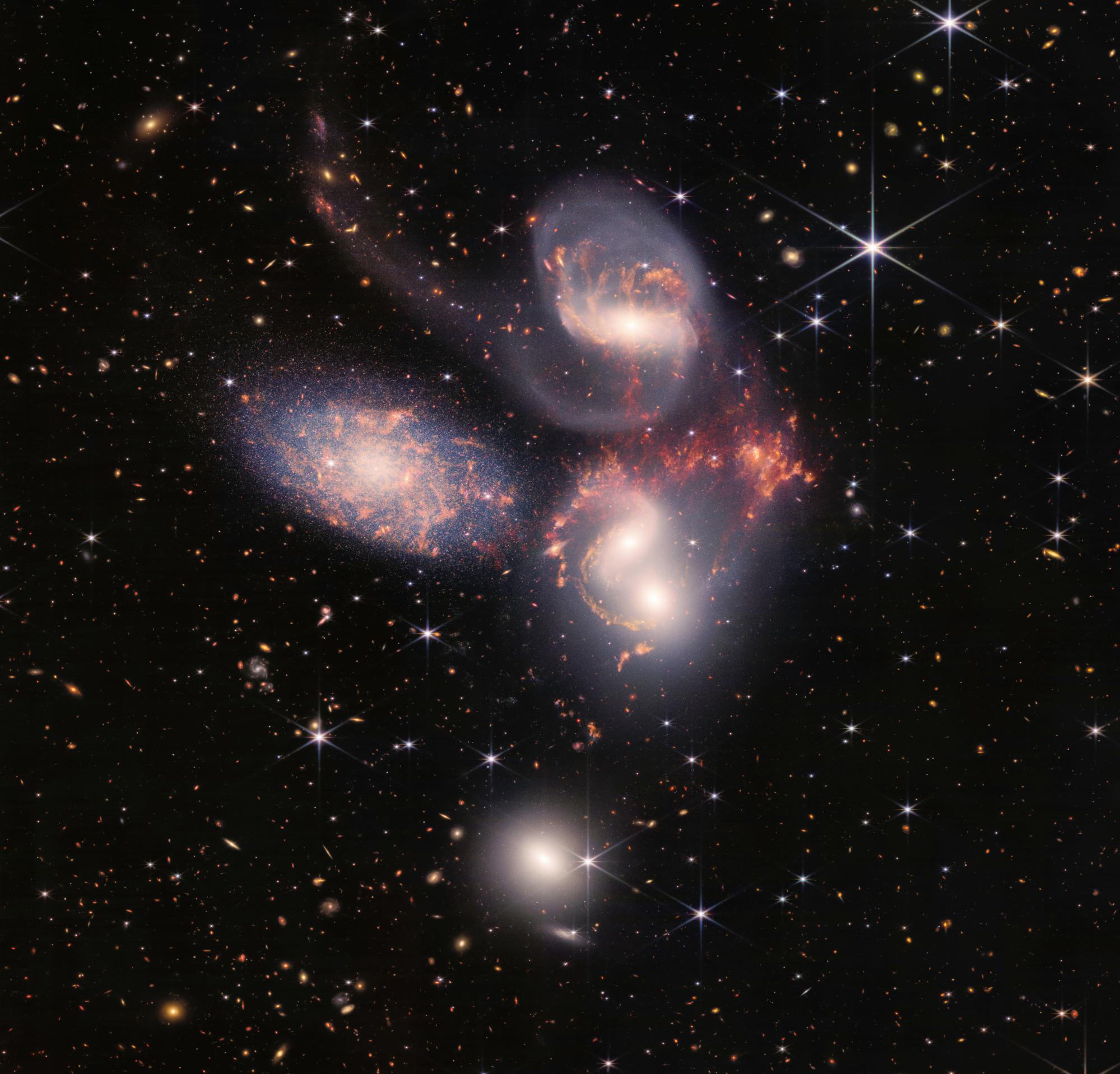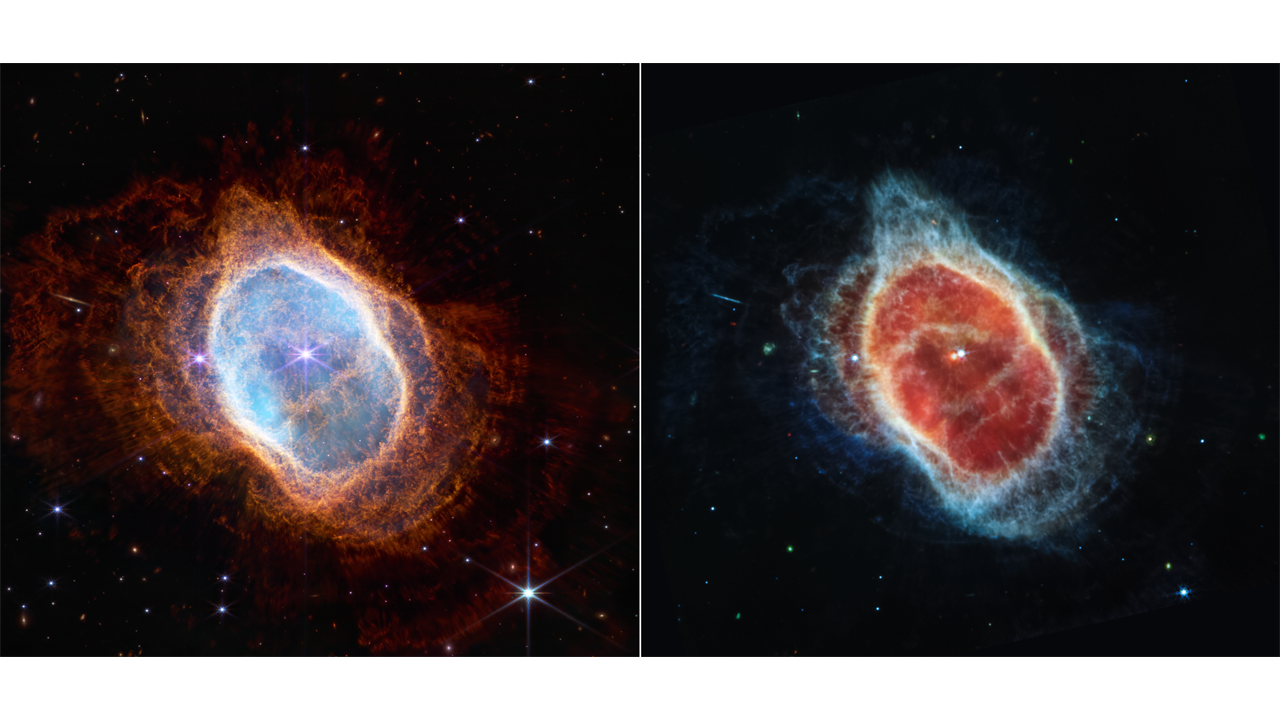NASA has revealed a selection of new images from the James Webb Space Telescope JWST – allowing us to see the unseen universe in more detail than ever
The telescope’s first full-colour images and spectroscopic data were released during a televised broadcast at 10:30 a.m. EDT (14:30 UTC) on Tuesday, July 12, 2022, from NASA’s Goddard Space Flight Center in Greenbelt, Maryland.
The team have released a number of images that are all available for public viewing on the Webb Space Telescope first images page. Through the JWST we are able to see some of the largest and celarest space pictures ever taken.

Called the Cosmic Cliffs, Webb’s picture looks like craggy mountains on a moonlit evening, in reality, it is the edge of the giant, gaseous cavity within NGC 3324.
The tallest “peaks” in this image according to NASA are about 7 light-years high. The cavernous area has been carved from the nebula by the intense ultraviolet radiation and stellar winds from extremely massive, hot, young stars located in the center of the bubble, above the area shown in this image.
Understanding the unseen universe
“Today, we present humanity with a groundbreaking new view of the cosmos from the James Webb Space Telescope – a view the world has never seen before,” said NASA Administrator Bill Nelson. “These images, including the deepest infrared view of our universe that has ever been taken, show us how Webb will help to uncover the answers to questions we don’t even yet know to ask; questions that will help us better understand our universe and humanity’s place within it.”

Hot Gas Giant Exoplanet WASP-96 b Atmosphere Composition, NIRISS Single-Object Slitless Spectroscopy.” The graphic shows the transmission spectrum of the hot gas giant exoplanet WASP-96 b captured using Webb’s NIRISS Single-Object Slitless Spectroscopy with an illustration of the planet and its star in the background. The data points are plotted on a graph of amount of light blocked in parts per million versus wavelength of light in microns. A curvy blue line represents a best-fit model. Four prominent peaks visible in the data and model are labeled “water, H2O.”
Analysis of light from one of the galaxies revealed its chemical makeup, a first for such a distant galaxy. “We’re seeing these galaxies in detail we’ve never been able to see before,” said Dr Jane Rigby, an operations project scientist on Webb.

The team from Webb have described this image as: “An enormous mosaic of Stephan’s Quintet is the largest image to date from NASA’s James Webb Space Telescope, covering about one-fifth of the Moon’s diameter. It contains over 150 million pixels and is constructed from almost 1,000 separate image files. The visual grouping of five galaxies was captured by Webb’s Near-Infrared Camera (NIRCam) and Mid-Infrared Instrument (MIRI).”
With many more images to come, we simply cannot wait to see more of our universe!











